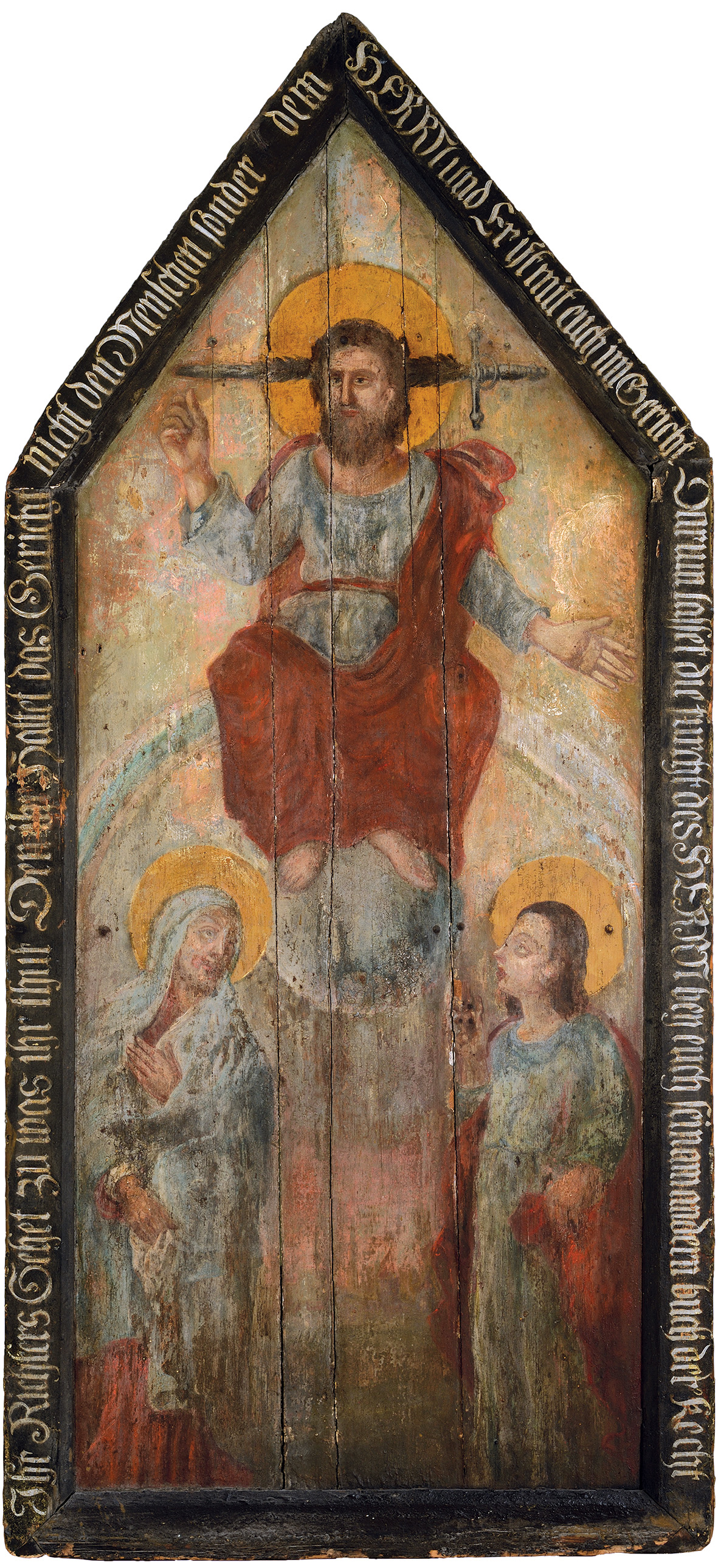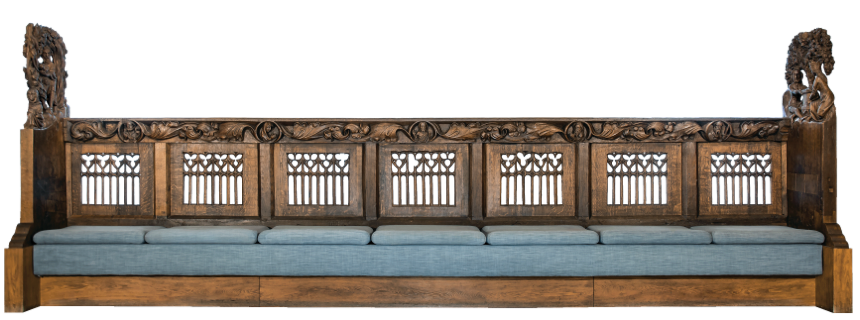6.The Last Judgement. Tapestries with plant patterns
The Last Judgement was, during the Middle Ages, a symbol of the administration of justice. Its depiction is based on New Testament texts, which describe a divine revelation (apokalypsis in Greek) about the end of the world. In the end, Christ will pass judgement on all dead souls for their earthly actions.
6.1The Last Judgement on the facade
 The painting depicting the Last Judgement is on the Town Hall facade, behind the courtroom’s windows. Christ is sitting on a rainbow, his feet on the ground, and wearing a red cloak, i.e. “the cloak dipped in blood”. The red walls in the council chamber derive from this. Christ’s right hand guides the pure souls into paradise in heaven and the left hand guides the sinners down into hell. Atop his head is a sword as a symbol of punishment. The Virgin Mary is on Christ’s right hand and the Apostle John is on his left hand.
The painting depicting the Last Judgement is on the Town Hall facade, behind the courtroom’s windows. Christ is sitting on a rainbow, his feet on the ground, and wearing a red cloak, i.e. “the cloak dipped in blood”. The red walls in the council chamber derive from this. Christ’s right hand guides the pure souls into paradise in heaven and the left hand guides the sinners down into hell. Atop his head is a sword as a symbol of punishment. The Virgin Mary is on Christ’s right hand and the Apostle John is on his left hand.
The painting designated the Town Hall as a courthouse and showed that God passes judgement in the Town Hall through the councillors. The text on the margins of the painting reminds the councillors that they as judges are also subordinate to the heavenly court: on the Day of Judgement God will pass judgement on them based on their administration of justice.
6.2The Last Judgement on the bench
Characters of the Last Judgement are sitting on the bench where councillors sit as judges. Christ as judge is in the middle. His right hand guides the pure souls up into heaven and the left hand guides the sinners down into hell. The Virgin Mary is praying on Christ’s right hand, his blessed side. Next to her is the Apostle Peter with keys – according to the Bible, Christ gave him the keys to the heavenly realm. John the Baptist is on Christ’s left hand, his condemned side. Next to him is the Apostle Paul with a sword. NB! The sides are mirrored for an observer standing before the bench.
The backrest of the councillor’s bench is from the first quarter of the 15th century.
6.3Tapestries with plant patterns
 The town council’s tapestry collection also includes five tapestries with plant motifs or verdures (verdure in French for “greenery”). These plant tapestries on the court walls indicated the primeval custom of conducting trials in the open air under a sacred tree. The woollen tapestries, in addition to decorating the Town Hall, were also supposed to generate heat, which is why they were hung in front of windows for wind protection.
The town council’s tapestry collection also includes five tapestries with plant motifs or verdures (verdure in French for “greenery”). These plant tapestries on the court walls indicated the primeval custom of conducting trials in the open air under a sacred tree. The woollen tapestries, in addition to decorating the Town Hall, were also supposed to generate heat, which is why they were hung in front of windows for wind protection.

